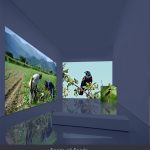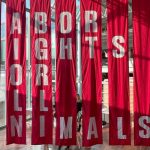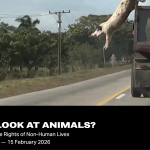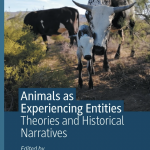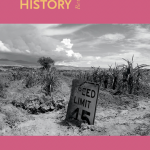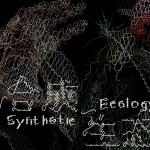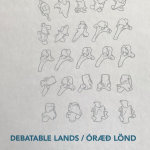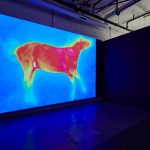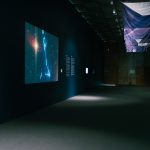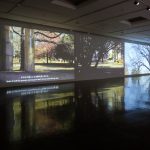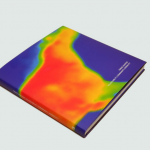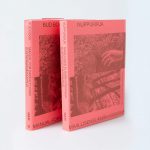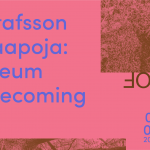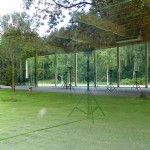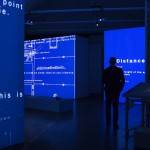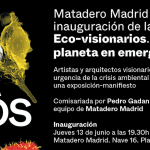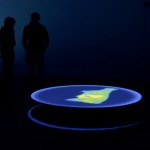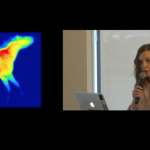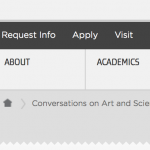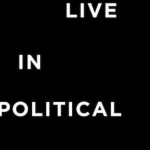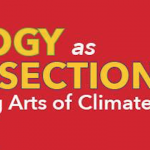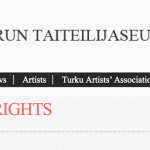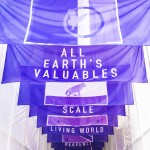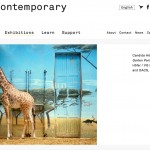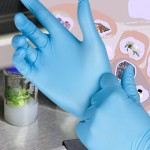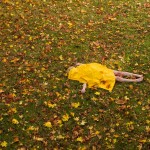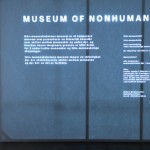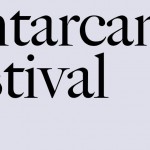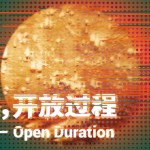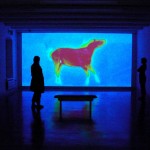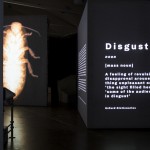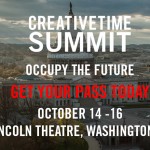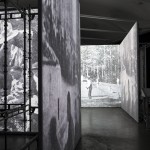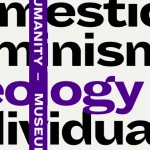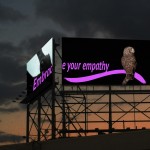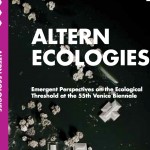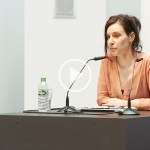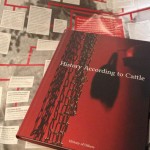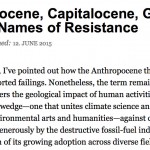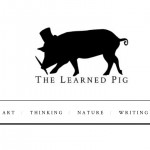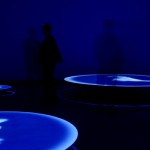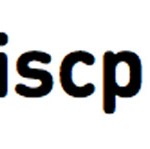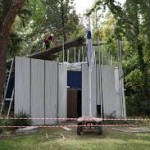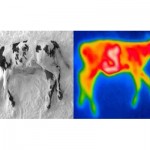In: Shifter 24: Learning and Unlearning.
Edited by Avi Alpert and Sreshta Rit Premnath, 2019.
The danger of utopianism is that it projects an idealized future that is by necessity a totality, an idealized version of today’s world with no tolerance for imperfection. But the future is always an opening rather than a fixed landscape. It is the opening that gives us the world as something other than a totality – a becoming. A utopia, then, is a vehicle for leaning towards that opening by letting it pull us forward while unexpected terrains – both hostile and nourishing – are revealed on the way.
In the wake of the environmental crisis – or rather, in the mainstream acknowledgement of a crisis that has been in the making for a good 500 years1 – utopian thinking has become urgently preoccupied with our relationship with nature. On the one hand, the future of the natural world as such is at stake, and we must address the question of how to save the planet where we can continue our utopian dreams.2 On the other hand, the question of ecotopia concerns the fact that in order to achieve the first, we must radically alter our relationship with and understanding of nature as something separate from human existence. Thus, the most fundamental thing to unlearn is the idea of human exceptionalism that makes it possible to identify a “nonhuman” field of life as something to be freely exploited.
The extractive use of natural resources and the exploitation of the labor and bodies of both humans and nonhumans is widely critiqued in different fields of leftist political ecology. Yet, the question of the animal tends to be missing from these conversations. By the question of the animal I don’t mean the ecological devastation that animal agriculture generates or the mass extinction of species due to climate change, both of which are addressed in conversations about developing more balanced economies that would be in line with the limits of earth’s ecosystems. Instead, I refer to “the animal” as the conceptual framework that renders beings of all species killable. In resonance with the work of Syl Ko, Che Gossett and others, I argue that the deconstruction of the concept of “the animal” as “the Other” from the perspective of white supremacist humanism is essential in order to dismantle racial petrocapitalism and other forms of systemic violence against both human and nonhuman lives.
Conversations about animal rights and human rights tend to happen in different circles of activism. The relationship between these circles is often nonexistent, if not hostile. The clash between animal rights and social justice movements can be traced to their conceptualization of the boundary between humans and animals. Animal rights advocates often approach animal liberation as the next phase in what can be described as rings of emancipation that started with the abolition of slavery, followed by legal recognition of the rights of women, children, disabled and LGBTQ people. Nonhuman animals, in this framework, are seen as the next in line to enter the sphere of rights. The concept of speciesism, made popular by philosopher Peter Singer, is intended as a way to point to a structural similarity between the oppression of nonhuman animals and humans.3 According to the notion of speciesism a random signifier (in this case biological species) has been used to justify the oppression of a group. What this approach misses, of course, is that freedom has not yet arrived for many, if not most, people who are still fighting for basic rights. Furthermore, from the humanist perspective, it is the very human-animal boundary that is the safeguard against dehumanization, in other words, against being “treated like an animal.” Animal rights would thus seem to threaten the very grounds on which social justice struggles stand, while social justice struggles, from the animal rights point of view, resort to an exclusive human supremacy, blind to the suffering of nonhuman life.
The animal rights advocates’ common argument for legal rights of nonhuman animals is to point to the mounting evidence of the cognitive similarities between humans and other beings. Their argument is that the categorical inferiority of all nonhuman animals has no empirical grounding in scientific data, which shows that the abilities that are traditionally considered to underwrite human exceptionalism can in fact be found in other lifeforms. This claim resonates with the ways that human rights campaigns prove that, despite phenotypical or cultural differences,“we are all human” and thus deserve equal treatment. If the projected categorical inferiority of nonhuman animals or racialized people has no scientific basis, then why do animal oppression and racism prevail? One reason is that, like race, what we refer to as human and animal are not scientific categories of biological types, but moral categories. Thus, using essentialist similarities or differences has little effect on oppression. Approaching the question of animal as a question of animalization of both humans and nonhumans provides a more productive framework for both animal ethics and social justice.
Posthumanist scholarship has long pointed out that in Western thought the notion of human is a construct that has been constituted through rejecting what it is not. A core part of this project has been the human need to externalize and reject its own animality, and to project its undesired characteristics onto those rendered “other” to the realm of humanity. Since the self-ascribed norm of humanity proper has, throughout Western history, been the white, straight, upper-class man, anyone who diverts from this norm has been considered less human and thus already in danger of being “treated like an animal.” Giorgio Agamben calls this perpetual operation the “anthropological machine” at the heart of Western thought. This machine ceaselessly tries to separate humanity from the underlying animal body, with lethal consequences.4 Cary Wolfe, in turn, describes the biopolitical field as a “species grid” of humanized humans, animalized humans, humanized animals and animalized animals rather than a neat two-category field of humans/ animals that is marked by a species difference.5
All these descriptions point to the fact that moral categories are created not by observing differences but by performative naming. As Cora Diamond writes, naming someone a human constitutes them as someone not killable, and vice versa: already naming someone an animal constitutes them as someone who can be killed.6Observable similarities and differences are used to reinforce these labels, not to create them. The binary arrangement of “humans” as those who have moral worth as opposed to “animals” who lack moral worth is thus a condition of possibility for a matrix that makes possible other forms of oppression such as racism, sexism or xenophobia.
While posthumanist and biopolitical scholarship sees the human-animal binary as a human condition that is integral to the Western and westernized worldview since antiquity, some contemporary scholars have advanced the conversation by pointing to the particular way in which race and animality are entangled in the modern Western imaginary. In Aphro-Ism – Essays on Pop Culture, Feminism, and Black Veganism from Two Sisters, Syl Ko argues that the birth of race in the European imaginary in the 16th century also marked a radical shift in the logic governing human-animal relations.7 The sociologist Ramon Grosfuegel notes that encountering indigenous people of the Americas opened up a space for a racial logic in the minds of Spanish colonists, who thought of indigenous people as animal-like humans.8 Colonialism thus gave birth to the emergence of racial hierarchies within the figure of the human in the Western imaginary. This was further cemented in the course of the transatlantic slave trade, during which blackness was marked as a signifier of “subhumanity” while whiteness became the signifier of “human proper.” Syl Ko argues that this new binary of “human proper” and “subhuman” transfigured or even replaced the historical human-animal binary. The constitutive “Other” to the Western notion of human was not anymore the literal nonhuman animal, but the racialized human other.9 Ko writes about how the human-animal boundary was thus redrawn along racial lines. In the racial imagination, not only are “subhumans” animalized through their assumed proximity to the animal, but nonhuman animals are also racialized through their assumed proximity to the “subhuman.” Racialization and animalization merge into two instances of the same figure: the binary opposite of the colonial, white supremacist, patriarchal, and classist figure of a “human.”
It follows not only that the human-animal boundary is what makes it possible to throw anyone outside the protections of humanity and “treat them like an animal” (as is widely noted in posthumanist discourses), but also that it will be impossible to dismantle racism or coloniality without also dismantling the logic of animality and vice versa. As Maneesha Dekha notes, resorting to equal human rights is not possible since the notion of humanity is already constituted by excluding racialized others.10 Furthermore, dismantling the toxic notion of humanity, by necessity, requires dismantling the notion of animal as foundational to the hierarchy itself. As the colonial logic of animalization encompasses nonhuman animals in its framework, decolonization must lead to refiguring our concrete relationships and moral attitudes towards nonhuman animals as well.
In this context, Syl Ko builds a powerful argument for what she calls Black Veganism as a form of resistance against white supremacy and its logic of animalization. For Ko, veganism – yet another form of environmentalism that is typically dominated by white perspectives – takes anti-racism as its starting point to provide a place of solidarity and alliance with all those oppressed by toxic humanism. Ko writes that “because racism is simultaneously anti-black and anti-animal,” an animal ethic “is internal to the project of black liberation.”11 Black Veganism, then, is not about being black and vegan, but a way of being vegan, and of reformulating how we understand oppressions and injustices ordinarily thought to affect only human beings. While Black Veganism is available for anyone who wants to commit to this form of resistance, people who have been subjected to racism have particular knowledge about the workings of animalization. Internalized racism manifests as what Ko describes as a feeling of an ontological lack (of humanness). This embodied knowledge of the entanglement of blackness and animalization can be a way of apprehending “the animal” as a vast social body and turned into a tool for resistance and ethical revaluation.12 To reject the white supremacist notion of human, Ko suggests, means reclaiming blackness, but also reclaiming the signification of the concept of animality. Instead of putting already marginalized groups in competition with each other, to reconceptualize animal oppression and oppression of humans through the notion of race allows these movements to unite their fronts. This is not only a vehicle for human emancipation. Ko writes how the process of reclaiming the concept of the animal has direct implications “for those who suffer most from the category ‘the animal’ – nonhuman animals.” She continues: “Their inferiority is also materially located in their bodies, which are generally marked as consumption items, objects to be used as we see fit, and so forth.”13 Thus, foregrounding the entanglement of racialization and animalization allows us to keep the suffering and oppression of nonhuman animals in focus (something that is easily missed in ecological discourses that focus on environmental impact) while not falling into the “colorblind” animal rights’ advocacy that completely bypasses notions of racial and social justice.
Taking the question of the animal seriously carries important potential for political ecology. The rise of capitalism as deeply entangled with transatlantic slave trade was made possible by the construct of race as a justification for mass scale abduction, inter-generational violence, and genocide. This violence still continues today in the form of racialized climate violence, forced displacement and global economic inequality. If race, in turn, is inseparable from animality, capitalism without animality is unthinkable. What this means is that fighting capitalism without fighting the core logic of animalization will always remain a futile gesture. In other words, animal liberation as well as anti-racism should be at the core of all anti-capitalist resistance. Che Gossett writes: “Abolition is always already about ecology and we continue to need and demand an abolitionist ecology. This is true especially in the face of accelerated climate change which actually ties directly into the prison industrial complex and in the face of racial capitalism that forecloses all forms of life through caging and killing and rendering human and nonhuman life forms as surplus and disposable.”14
The task of ecotopia, then, is to think of a world beyond animality: beyond an order that organizes beings into those protected and those killable by using animality and humanity as its divider. This is a world without a Difference (as Diamond puts it) between the human and the non-human, but not a world without differences.15Letting go of a binary logic frees the heterogeneousness of life to flourish and form kinships and alliances across species divides. This is a world that is, by necessity, without capitalism, because animality is the conceptual bedrock that makes capitalism possible (crude oil is, afer all, made of the bodies of ancient creatures – while the energy generated by oil has literally replaced the labor of enslaved, animalized people). The task, to conclude, in Syl Ko’s words, is to “build up a different “new world,” one that is not defined in terms of dichotomies or hierarchies or emotional death – but centered on love: one in which we accept ambiguity and difference, grounded in an expansive, limitless “we.”16
First published in: Shifter 24: Learning and Unlearning. Ed. Premnath, Sreshta Rit and Alpert, Avi. New York, 2019.
References
Agamben, Giorgio, 2004. The Open – Man and Animal. Stanford: Stanford University Press.
Davis, Heather and Todd, Zoe, 2016. On the Importance of a Date, or Decolonizing the Anthropocene. ACME An International Journal for Critical Geographies.
Deckha, Maneesha, 2010. The Subhuman as a Cultural Agent of Violence. In: Journal for Critical Animal Studies, Volume VIII, Issue 3, 2010
Demos, Tj, 2017. Against the Anthropocene – Visual Culture and the Environment Today. Berlin: Sternberg Press.
Diamond, Cora, 1978. Eating Meat, Eating People. Philosophy. Vol. 53, No. 206 (Oct., 1978), pp. 465-479. published by Cambridge University Press on behalf of Royal Institute of Philosophy.
Grosfuegel, Ramon, 2013. The Structure of Knowledge in Westernized Universities –
Epistemic Racism/Sexism and the Four Genocides/Epistemicides of the Long 16th Century. In: Human Architecture: Journal of the Sociology of Self-Knowledge, Xi, issue 1, fall 2013, 73-90
Ray Filar: Cruising in the End Times – An Interview with Che Gossett. Verso Blog 18 December 2016.
Aph Ko and Syl Ko, 2017. Aphro-Ism – Essays on Pop Culture, Feminism, and Black Veganism from Two Sisters. Brooklyn:Lantern Books, 2017
Ly, Palang, 2019. An Interview with Syl Ko – Activism in terms of an epistemological revolution. In: Tierautonomie. February 2019. Tierautonomi: http://simorgh.de/tierautonomie/JG6_2019_1.pdf
Wolfe, Cary, 2003. Animal Rites: American Culture, the Discourse of Species, and Posthumanist Theory. London/Chicago: University of Chicago Press.
1Many scholars and activists have pointed out that the roots of the climate crises are much further back in history than what is commonly acknowledged. Heather Davis and Zoe Todd argue that placing the start date of the era of the Anthropocene to 1492 would make it possible to perceive the entanglement of racial capitalism and colonialism as the root of current climate destruction (Davis and Todd, 2016). TJ Demos argues, similarly, that to view the crises in universalist, geological terms overlooks the fact that the driving forces behind what is called the Anthropocene are in fact racial capitalism and corporate exractivism, ruled by a small minority of “the anthropos” (Demos, 2017). Many different variations of the term seek to capture these aspects, such as Capitalocene and Plantationocene (Donna Haraway) or White Supremacy Scene (Nicholas Mirzoeff).
2See for example Center for Creative Ecologies’ research project “Beyond the End of the World” (https://news.ucsc. edu/2018/10/mellon-humanities-futures.html), University of Oregon’s Center for Environmental Futures (https://blogs. uoregon.edu/uocef/) or Mustarinda Residency (https://mustarinda.fi)
3The concept Speciesm was introduced by Richard Ryder in 1970, and it has been popularised by philosopher Peter Singer in Animal Liberation – A New Ethics for Our Treatment of Animals (Singer, 1975).
4Agamben, 2004.
5Wolfe, 2003. 101.
6Diamond, 1978. 465-479.
7Ko, 2017. 23-25, 45-46,
8Grosfuegel, 2013. 73-90
9Ly, 2019.
10Deckha, 2010.
11Ko, 2017. 121.
12Ibid., 124
13Ibid., 69
14Filar, 2016.
15Diamond, 1978. 465-479.
16Ko, 2017. 75.
